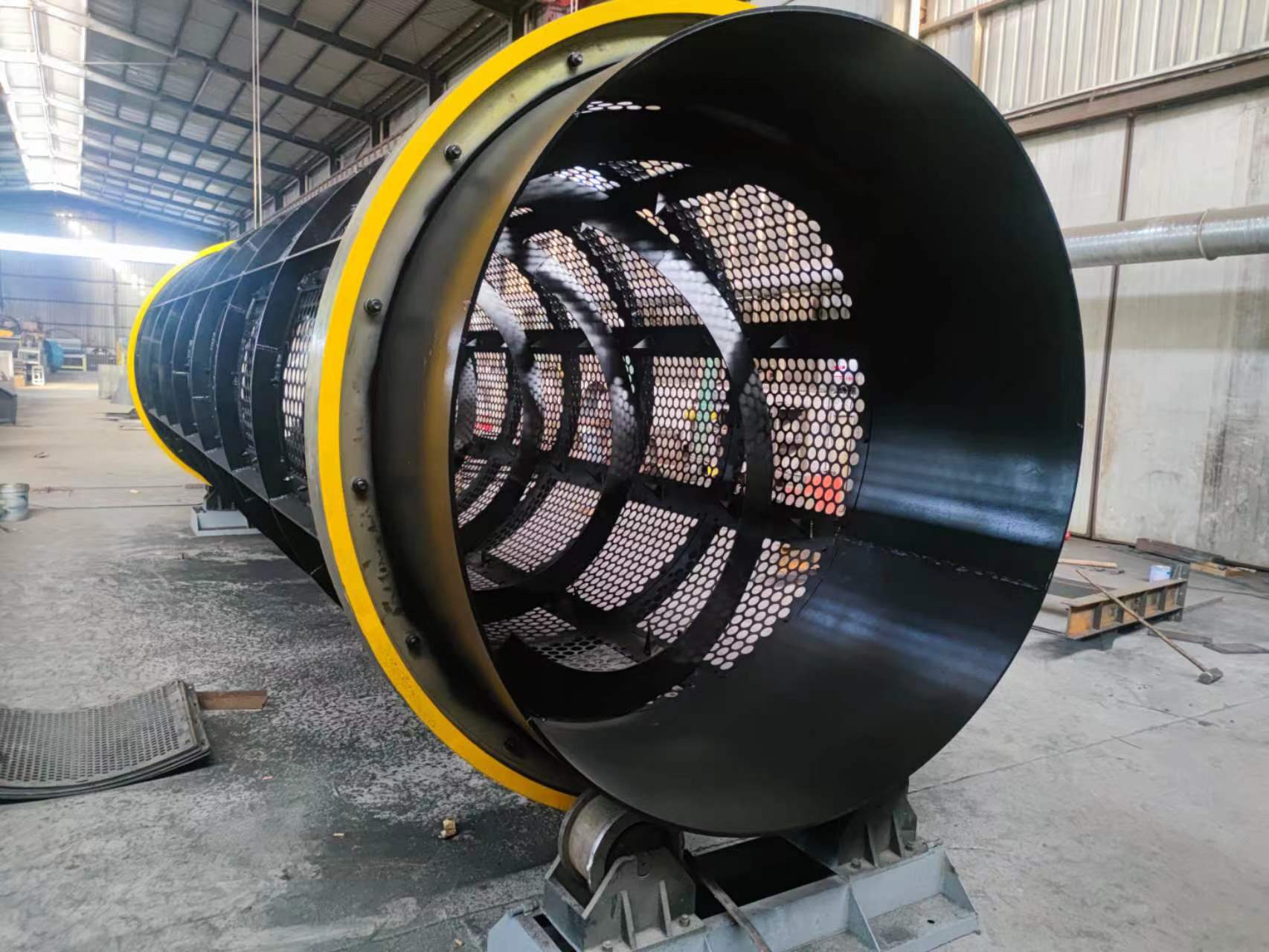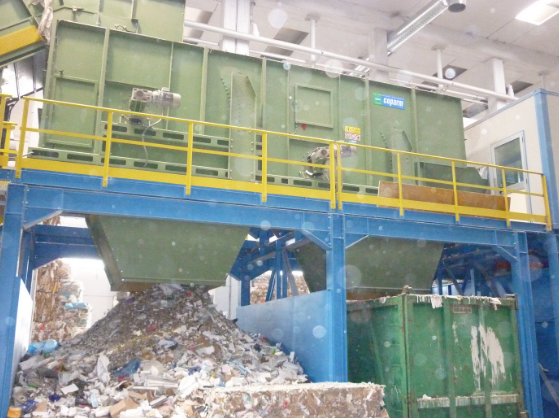How Does a Large Trash Trommel Screen Work?
The waste management industry has undergone significant transformations over the past few decades, primarily due to the growing need to reduce environmental impacts and promote sustainability. One of the most important innovations in this industry is the trommel screen, a machine that separates waste materials based on size and composition. This equipment plays a key role in sorting different types of trash, thereby enhancing recycling efforts and reducing landfill waste.
In this article, we will explore how large trash trommel screens work, their importance in waste sorting, and how manufacturers are creating advanced machines to meet the growing demands of waste management.
What is a Trommel Screen?
A trommel screen is a mechanical device that separates waste materials based on their size. It consists of a large, rotating cylindrical drum with perforated or mesh walls. The holes in the drum allow smaller particles to fall through, while larger materials continue through the drum for further processing.
In large-scale trash sorting operations, trommel screens are often used to separate recyclable materials like metal, glass, and plastic from organic waste and other non-recyclable debris. These machines can handle vast quantities of waste, making them highly efficient for use in municipal waste management, construction and demolition (C&D) waste sorting, and industrial recycling facilities.

Key Components of a Large Trash Trommel Screen
Rotating Drum: The drum is the core component of the trommel screen. Made of durable metal or mesh, it rotates on a central axis, allowing the waste material inside to be continuously agitated and sorted. The size of the holes in the drum determines which materials are allowed to pass through.
Infeed Hopper: Waste materials are loaded into the trommel screen via the infeed hopper. The hopper is designed to feed the materials evenly into the rotating drum to ensure efficient sorting.
Discharge Chutes: Once the waste materials have been sorted, they are discharged through separate chutes. Typically, finer materials like soil and compost exit through one chute, while larger recyclables and non-recyclables exit through another.
Motor and Drive System: The rotation of the drum is powered by an electric or hydraulic motor. The motor is connected to the drive system, which controls the speed of the drum's rotation. Adjusting the drum speed allows operators to control the sorting process, making it possible to handle different types of waste with varying efficiency.
Screens of Various Sizes: Depending on the specific sorting requirements, trommel screens may come equipped with multiple screens of varying sizes. This allows for more precise sorting of materials, ensuring that only the desired waste particles pass through.
Fines Conveyor: After smaller particles fall through the perforations in the drum, they are typically collected on a fines conveyor. This conveyor moves the materials to another part of the facility, where they may undergo further processing.

How Does a Large Trash Trommel Screen Work?
The operation of a large trash trommel screen is relatively simple yet highly effective. Below is a step-by-step breakdown of how the machine works:
Feeding the Waste Material
The process begins when the waste materials are fed into the trommel screen through the infeed hopper. Depending on the type of waste, the material may include a mixture of recyclables, organic matter, and non-recyclable debris. The waste is distributed evenly into the rotating drum to ensure optimal separation.
Rotation of the Drum
As the waste enters the drum, the cylindrical structure begins to rotate. The rotation causes the materials to tumble and spread out across the surface of the drum. The perforated walls of the drum allow smaller particles to fall through, while larger materials continue to move along the length of the trommel.
Separation by Size
The key feature of a trommel screen is its ability to separate materials based on size. The holes or mesh in the drum allow smaller particles, such as soil, compost, and fine debris, to fall through while larger materials remain inside the drum for further processing. The size of the holes in the drum can be adjusted depending on the type of waste being sorted.
Screening of Different Materials
As the waste continues to tumble inside the drum, it is screened into different categories based on size and composition. Large recyclable materials such as plastic, metal, and glass are separated from organic matter like food scraps and yard waste. This process is essential for efficient recycling, as it ensures that recyclable materials are properly sorted and can be sent for further processing.
Discharge of Sorted Materials
Once the waste has been sorted, the separated materials are discharged through different chutes. For example, fine particles such as compost or soil will exit through one chute, while larger recyclable materials such as plastics, metals, and non-recyclable trash exit through other chutes. The sorted materials can then be transported for further processing, recycling, or disposal.
Post-Screening Processes
In many waste management facilities, trommel screens are used in combination with other sorting equipment, such as eddy current separators or magnetic separators, to further refine the waste stream. These machines help remove metals and other specific materials from the waste, ensuring a more thorough separation process.
![__XXEN)V(IX]%8]IF~BE1V8.png](/uploads/allimg/20240910/1-2409100954142S.png)
Benefits of Using Trommel Screens in Waste Sorting
The use of trommel screens in waste sorting facilities offers several benefits, particularly in terms of efficiency and sustainability.
Increased Efficiency
Trommel screens are highly efficient machines, capable of processing large volumes of waste in a short amount of time. By automating the sorting process, they reduce the need for manual labor and increase the speed at which materials can be sorted. This efficiency is particularly important in large-scale waste management operations, where time and resources are critical.
Improved Accuracy in Material Separation
The ability to customize the size of the screen perforations allows trommel screens to sort materials with a high degree of accuracy. This leads to better-quality recyclables, as well as a reduction in contamination, making the recycling process more streamlined and cost-effective.
Reduction in Landfill Waste
One of the key environmental benefits of trommel screens is their ability to divert a significant portion of waste from landfills. By effectively separating recyclable materials and organic waste, these machines reduce the amount of waste that ends up in landfills, thereby helping to lower methane emissions and prevent soil and water contamination.
Energy Efficiency
Modern trommel screens are designed to be energy-efficient, consuming less power while still delivering high performance. Manufacturers are continuously improving the design of these machines to minimize energy consumption, making waste management processes more sustainable.
Manufacturing Trommel Screens: Key Considerations
For manufacturers of trommel screens, several factors must be considered to ensure that the machines meet the needs of the waste sorting industry. Factories producing trommel screens must focus on durability, customization, and energy efficiency.
Durability and Robust Construction
Trommel screens are subject to heavy loads and continuous use, making durability a key consideration for manufacturers. High-quality materials, such as wear-resistant metals and corrosion-resistant mesh, are essential for creating long-lasting machines.
Customization for Specific Waste Streams
Manufacturers must also offer customization options for different types of waste streams. For example, screens with different hole sizes and drum configurations may be needed for municipal solid waste (MSW) sorting, construction debris, or industrial recycling applications.
Energy Efficiency and Sustainability
With growing environmental concerns, energy-efficient designs are critical for trommel screen manufacturers. By integrating advanced technologies and reducing energy consumption, manufacturers can help waste management facilities operate more sustainably.
![E]LZ13{GI[JS1FI0DTN_8S6.png](/uploads/allimg/20240910/1-24091009492N92.png)
Conclusion
A large trash trommel screen is an essential machine in waste sorting operations, offering efficiency, precision, and environmental benefits. By separating materials based on size, trommel screens make it easier to recycle valuable materials and divert organic waste from landfills. As the world continues to prioritize sustainability, the role of trommel screens in waste management will only grow, and manufacturers will play a key part in ensuring that these machines are built to meet the challenges of a greener future.
-
 Trommel screenTrommel screen, also known as drum screens, are widely used in various industries for sorting and separating materials.Get Quote
Trommel screenTrommel screen, also known as drum screens, are widely used in various industries for sorting and separating materials.Get Quote -
 Crop straw double shaft shreddApplications:Biomass Energy Production: Shredded straw can be used as a feedstock for bioenergy plants to produce electricity or heat.Livestock Feed: Reduced-si...Get Quote
Crop straw double shaft shreddApplications:Biomass Energy Production: Shredded straw can be used as a feedstock for bioenergy plants to produce electricity or heat.Livestock Feed: Reduced-si...Get Quote -
 Zhongcheng Air Drum SeparatorAir drum separators effectively separate lightweight materials (e.g., plastics, paper) from heavier materials (e.g., metals, glass). This high efficiency is cru...Get Quote
Zhongcheng Air Drum SeparatorAir drum separators effectively separate lightweight materials (e.g., plastics, paper) from heavier materials (e.g., metals, glass). This high efficiency is cru...Get Quote
-
2024-08-28Scrap rubber product shredderThe shredder of waste rubber products not only helps to reduce environmental pollution, but also improves the reuse rate of waste rubber, which is one of the im...
-
2023-01-11Trommel screenTrommel screen, also known as drum screens, are widely used in various industries for sorting and separating materials.
-
2024-06-09Drum Screen RecyclingDrum screen machines are primarily used for material screening, helping to sort and recycle municipal solid waste and screen landfill waste. Their efficiency an...
-
2024-05-18Jaw CrusherThe working principle of jaw crusher Although the jaw crusher has various structural types, its working principle is the same, that is, the material is crushed ...
-
2023-01-12Conveyor BeltGarbage conveyor/Trash conveyor belt system is a processing line to classify paper, plastic, metal, glass, and organic matter and realize the recycling of rubb...



